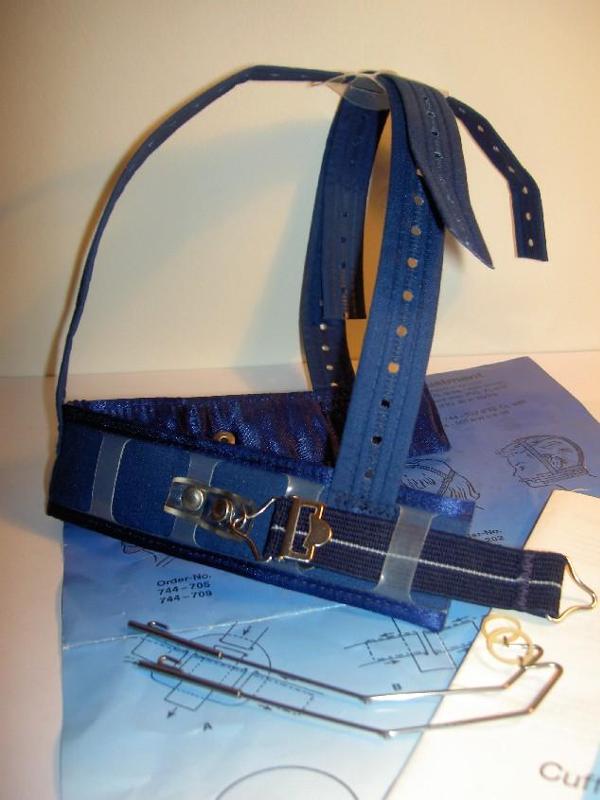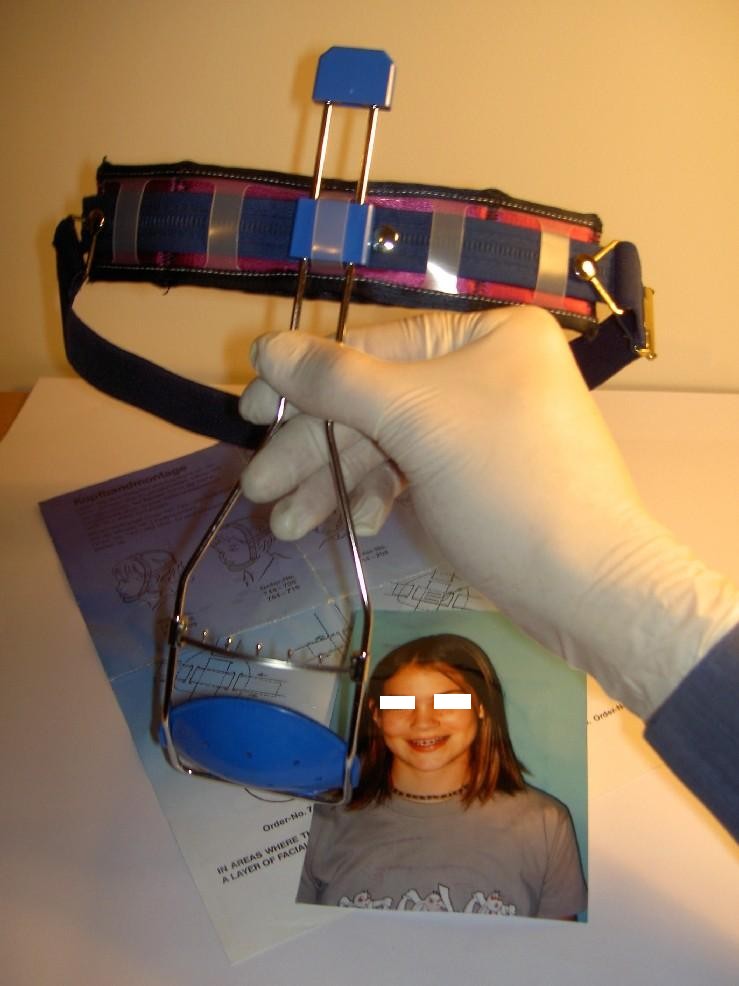Orthodontic technology
Editor-In-Chief: C. Michael Gibson, M.S., M.D. [1]
Overview
Orthodontic technology is a specialty of dental technology that is concerned with the design and fabrication of dental appliances for the treatment of malocclusions, which may be a result of tooth irregularity, disproportionate jaw relationships, or both.
There are three main types of orthodontic appliances: active, passive and functional. All these types can be fixed or removable.
Active Appliances
An active appliance is a device used to apply forces to the teeth to change the relationship of the teeth.
Removable active appliances
- Expansion and Labial Segment Alignment Appliance (ELSAA)
Fixed active appliances
- Pin and Tube Appliances
- Ribbon Arch Appliances
- Begg Lightwire Appliances
- Edgewise Appliances
- Pre-adjusted Edgwise Appliances
- Self-ligating Edgewise Appliances
- Bi Helix
- Tri Helix
- Quad Helix
- Rapid Maxillary Expansion Appliance (RPE)
Passive Appliances
Passive appliances include space maintainers and retainers
Removable passive appliances
- Hawley Retainer
- Begg Retainer
- Pressure Formed "Essix" Retainer
Fixed passive appliances
- Bonded "Twistflex" Retainer
- Fixed Space Maintainer
Functional appliances
Also known as dentofacial orthopaedic appliances, these appliances utilize the muscle action of the patient to produce orthodontic or orthopaedic forces. Various functional appliances have been described.
Removable functional appliances
- Andresen Appliance
- Bionator. Bionators initially look like a sort of combined upper and lower Hawley retainer, but do not fasten to the teeth and are not used for post-brace removal treatment. Bionators are held in the mouth within the space that the teeth surround when biting. They are used to expand the palate and create space for incoming teeth.
- Biobloc. Biobloc is an appliance used to posture forward the lower jaw.
- Clark Twin Block. This appliance incorporates the use of upper and lower bite blocks to position the mandible forward for skeletal Class II correction. The appliance was first developed by Scottish Orthodontist William Clark and Orthodontic Technician James Watt in 1977. The Twin Block has become the most popular functional appliance in use in the United Kingdom and is gaining popularity across Europe and the USA.
- Bass Dynamax. This appliance is similar in principle to the Twin Block. It is based around a prefabricated modular spring, built into a maxillary (upper)occlusal splint. Two integral vertical springs make contact with a fixed lingual arch or removable lower appliance to posture the mandible (lower jaw) forward for skeletal Class II correction. This appliance was developed by London Orthodontist Neville Bass in the early twenty-first century.
- Medium Opening Activator
- Orthodontic Headgear. This is a type of appliance attached to dental braces that aids in correcting more severe bite problems.

Headgear is an orthodontic appliance for the correction of Class II correction, typically used in growing patients to correct overbites by holding back the growth of the upper jaw, allowing the lower jaw to catch up.
The headgear can also be used to make more space for teeth to come in. The headgear is then attached to the molars (via molar headgear bands & tubes), and helps to push or draw them backwards in the mouth, opening up space for the front teeth to be moved back using braces and bands.
Headgear needs to be worn approximately 12 to 22 hours a day to be truly effective in correcting the overbite, and treatment is usually anywhere from 6 to 18 months in duration, depending on the severity of the overbite and how much a patient is growing.
For more details see Orthodontic headgear, for more details
- Orthodontic Facemask & Reverse-Pull Headgear. This functional appliance is used to control the growth of the maxillary and mandibular bones during orthodontic treatment.
Facemask or Reverse-pull Headgear is an orthodontic appliance typically used in growing patients to correct under bites (known as a Class III orthodontic problem) by pulling forward and assisting the growth of the upper jaw, allowing the upper jaw to catch up.

Facemasks or Reverse-pull Headgear needs to be worn approximately 12 to 22 hrs to be truly effective in correcting the under bite, usually anywhere from 6 to 18 months depending on the severity of the bite and how much a patient is growing.
The appliance normally consists of a frame or a centre bars that are strapped to the patients head during a fitting appointment. The frame has a section which is positioned in-front of the patients mouth, which allows for the attachment of elastic or rubber bands directly into the mouth area. These elastics are then hooked onto the child's braces (brackets and bands) or appliance fitted in his or her mouth.
This creates a forward 'pulling' force to pull the upper jaw forward. For more details see Orthodontic Facemask & Reverse-Pull Headgear.
Fixed functional appliances
- Herbst Appliance
- Fixed Twin Block Appliance
|
Cleft lip and palate Microchapters |
|
Diagnosis |
|---|
|
Treatment |
|
Case Studies |
|
Orthodontic technology On the Web |
|
American Roentgen Ray Society Images of Orthodontic technology |
|
Risk calculators and risk factors for Orthodontic technology |